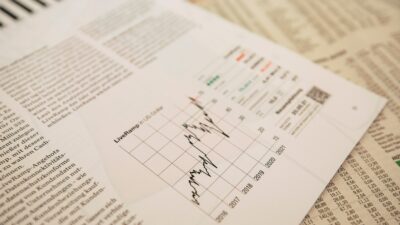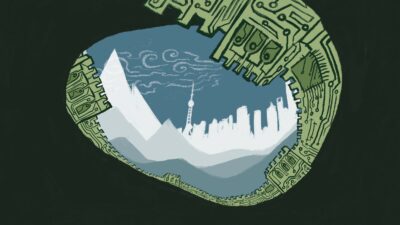
Resilience and prospects for China’s economy
The COVID-19 epidemic broke out suddenly in the beginning of this year. Unexpectedly, the epidemic rampage rapidly became a pandemic plaguing the world, though China has won phase victory in its prevention and control of the deadly virus.
It is now difficult to predict how China’s economy and that of the world are affected by the COVID-19. However, as far as we can judge from the aspects of economic data and business recovery situation in April and May, China’s economy is regaining its vigour and vitality and remains on the long-term upward curve. I would like to adopt the term “resilience” to summarise the characteristics of China’s economy and have made some prospects accordingly.
What is “resilience”? Resilience is a concept of physics, which refers to the ability of a material to absorb energy up to a plastic deformation or a fracture. The better the resilience is, the less likely brittle fracture occurs to the material. When this concept is applied to economic activities, it usually means the ability of an economy to resist fluctuation, risk and crisis. An economy will be deemed to be resilient or have good resilience if it manages to grow and develop against the trend under the impact of fluctuation, risk and crisis.
Where does the resilience of China’s economy come from? In the previous discussions on this issue, the main focus of attention was China’s national conditions, e.g. China’s large population, extensive market, and unlimited potential, vast territory, uneven development, and “those strategies impracticable here turning out to be workable elsewhere”. Those views make certain sense. In my opinion, from the perspectives of system and policy, the resilience of China’s economy comes from the following five aspects: unique system advantages, adherence to market-oriented reform, adherence to high-level opening-up, adherence to endogenous development , and continuously optimised macro-control. In this article, emphasis will be placed on the analysis of China’s unique system advantages and continuously optimised macro-control.

Under the influence of economic or non-economic factors, there will be great fluctuations in economic operation, or even potential systemic, economic recession or depression. In this context, a government’s response ability plays a very critical role which is based on the government’s existing system. Taking the impact of this COVID-19 pandemic as an example, China’s system advantages have been fully demonstrated from the perspective of prevention and control of the pandemic in its totality: under the centralised and unified leaderships of the CPC and central government, the resources can be effectively mobilised and organised; relying on smooth implementation of the central leadership’s orders and policies, the superior “forces” can be integrated to fight against the novel coronavirus; besides, interdepartmental linkage, pairing assistance and execution are very effective. Needless to say, government intervention in the economy, especially forced large-scale intervention, will produce after effects. However, it is a matter of the lesser of two evils. As John Maynard Keynes said, the society cannot afford serious and sustained unemployment. In the long term, we may achieve full employment, but in the short term, a social crisis may break out if the unemployment continues to rise. When the economy and society are severely impacted, the CPC and central government can make vigorous efforts to turn the table in adversity, which collectively indicates China’s system advantages. Moreover, once the fluctuation becomes sable, the risk disappears and the crisis is resolved, the economy and society will return to normal and be poised to move forward.
In case of severe economic fluctuations due to external shocks, counter-cyclical adjustment is required, so as to prevent the occurrence of risks and crises. The aforesaid counter-cyclical adjustment consists of a series of macro-control policies and measures. Since the reform and opening-up, China’s macro-control has undergone several economic fluctuations. Especially after the Asian Financial Crisis 1997, the American Financial Crisis 2008, price reform and overheated economy, China’s macro-control has become relatively mature and sufficiently stable upon practice, summary and re-practice . All experts concerned have reached a consensus that the impact of the COVID-19 pandemic is unprecedented, unprecedentedly huge and will last for a long term. In addition, China’s experience in coping with aggregate demand and aggregate supply either fail or is uncorrelated with the pandemic. However, China has correctly grasped the general direction of macro-control and made flexible adjustments in a series of operations. Thus, China not only has achieved its economic recovery in a short time, but also has accelerated innovation-driven and transformational development effectively.
While affirming the resilience of China’s economy, its system advantages, market-oriented reform, high-level opening-up, endogenous development, and macro-control’s role in forming such resilience, we shall also recognize that : there still exists a wide gap in economic strength and scientific and technological level between developed countries and China ; as the largest developing country, China still have many weaknesses and bottlenecks in governance, systems and policies. Consequently, China must make full use of the resilience of its economy under the external impacts, so as to quickly turn the table and go back to the track of normalised development. In normal times, China shall continue to maintain medium- and high-rate growth and high-quality development, so as to remove the bottlenecks and narrow the gap between it and developed countries.
Therefore, in my opinion, in case of no impact of the “second wave” of the COVID-19, with the global pandemic being effectively controlled as soon as possible, China’s economy will basically return to normal in the third quarter of this year, and will signify relatively robust growth. In the next period, China’s economy will move towards the established goals, boosted by key drivers including innovation-driven strategies, regional integration and emerging industries, in alignment with the requirements of high-quality development.
Share
We believe in open and honest access to knowledge.
We use a Creative Commons Attribution NoDerivatives licence for our articles and podcasts, so you can republish them for free, online or in print.







